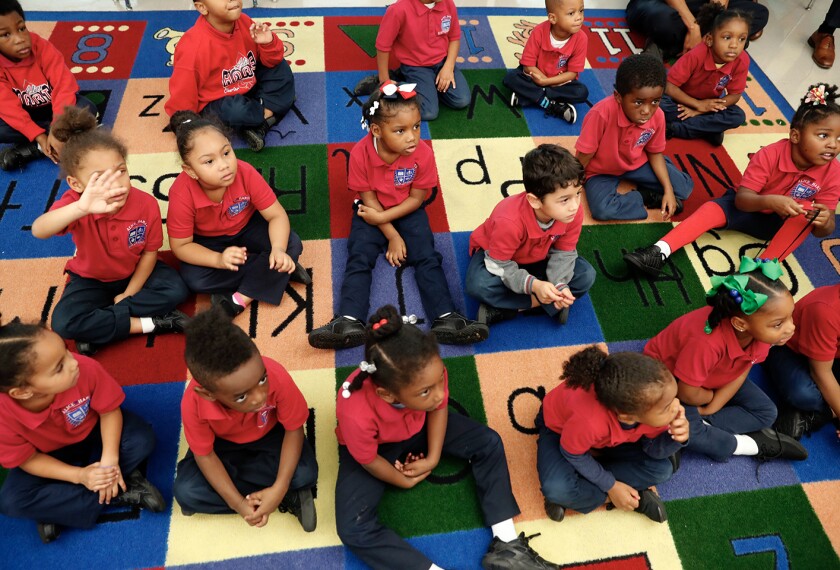The U.S. Department of Education has released long-awaited proposed regulations for the portion of the federal special education law that focuses on infants and toddlers with disabilities.
Referred to as Part C of the Individuals with Disabilities Education Act, the $436 million early-childhood program was established in 1986 to serve children from infancy to age 2. About 265,000 children nationally, representing about 2 percent of the population of babies and toddlers, were served under Part C, according to data collected by the Education Department in 2002.
Proposed regulations were introduced once before, in 2000, but were withdrawn from consideration in 2002 because, the department said, the special education law was too close to reauthorization for the regulations to be useful.
Among the new changes, according to the department, are clarifications in areas such as confidentiality and the use of insurance to pay for Part C services.
The regulations have been rearranged to follow more closely the reading of the special education law. Such changes make it easier to link a regulation back to the statute itself, according to the department.
State coordinators who work with young children with disabilities say they have been waiting for the regulations for a long time.
In 2005, the Infant and Toddlers Coordinators Association, a coalition of state-based service providers, wrote a letter to the Education Department saying that the organization was disappointed that the Part C proposed regulations would not be released until the department was done with the regulations for the Part B section of the law, which governs the education of school-age children.
“We are pleased that the draft Part C regulations have finally been posted. We’ve begun our analysis, and clearly there are significant changes,” Ron Benham, the president of the association and an education official in Massachusetts, said in a statement.
The Education Department will take comments on the proposed regulations until July 23. They are available at http://idea.ed.gov.
For more stories on this topic see Special Education.





